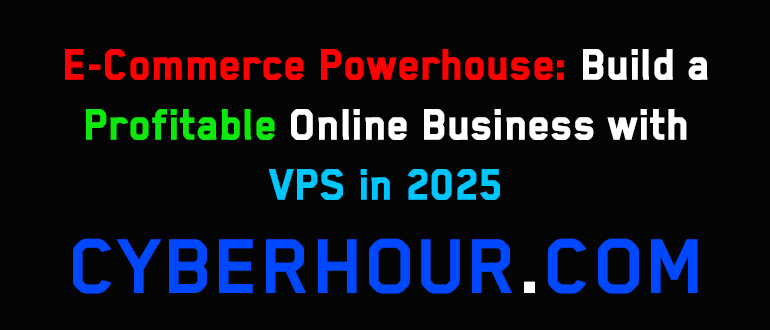E-Commerce Powerhouse: Build a Profitable Online Business with VPS in 2025
Imagine your online store crashing during a holiday sale because your hosting couldn’t handle the traffic. In 2025, where 67% of shoppers abandon carts due to slow loading times (Baymard Institute, 2024), shared hosting is a liability. Virtual Private Server (VPS) hosting gives you the speed, control, and security to turn browsers into buyers.
This guide walks you through launching and scaling a product-based business using VPS—from choosing the right provider to automating sales tax compliance. Let’s build your e-commerce empire.
1. Why VPS is the Backbone of Modern E-Commerce
Shared Hosting vs. VPS: A Tale of Two Storefronts
Shared hosting is like a flea market stall—crowded and unpredictable. VPS is your dedicated boutique:
- Guaranteed Resources: No more "neighbor noise" slowing your site during peak sales.
- PCI Compliance: Secure customer payment data (required for credit card processing).
- Custom Software: Run inventory management tools like TradeGecko or Linnworks.
Real-World Scenario:
A skincare brand using VPS handled 10,000 Black Friday orders/hour, while a competitor on shared hosting crashed, losing $50k in sales.
Stat Alert:
- 73% of consumers say site speed impacts their loyalty (Portent, 2024).
2. 2025 VPS Features Every Online Seller Needs
Built for the Future of Retail
- Edge Caching: Serve product images 3x faster to global customers.
- AI-Driven Load Balancing: Automatically direct traffic during flash sales.
- One-Click SSL: Free Let’s Encrypt integration for secure checkout pages.
3. Launching Your Store: A 10-Day VPS Setup Plan
From Server to First Sale
Days 1-3:
- Choose a VPS plan (4GB RAM minimum).
- Install Ubuntu/CentOS + Nginx for speed.
Days 4-7:
- Deploy WooCommerce or Shopify via 1-click installer.
- Configure automated tax tools like TaxJar.
Days 8-10:
- Stress-test with 500 virtual users (use LoadImpact).
- Enable Cloudflare CDN for image optimization.
4. Budgeting Smart: Where to Invest and Save
E-Commerce-Specific Costs
- Must-Spend:
- SSL Certificate (Free via Let’s Encrypt)
- Payment Gateway Fees (Stripe/PayPal)
- Save On:
- Pre-built themes vs. custom designs
Cost Breakdown for 10k Visitors/Month:
- VPS: $40
- Marketing: $300
- Inventory: 1,500∗Total: 1,500∗Total: 1,840/month*
5. Fortress Security: Protecting Your Store and Customers
2025’s Non-Negotiables
- Web Application Firewall (WAF): Block SQL injection attacks.
- Daily Encrypted Backups: Restore hacked sites in <1 hour.
- MFA for Admin Logins: Stop brute-force attacks.
6. Scaling Beyond 2025: Prepare for 100x Growth
Proven Strategies from 7-Figure Stores
- Kubernetes Clusters: Auto-scale product pages during TikTok virality.
- Multi-Region Hosting: Serve EU customers from CyberHour servers (GDPR compliance).
Case Study:
GadgetHub grew from 10k to 2M/month by migrating to VPS + Redis caching, cutting load times by 62%.
FAQ: Your E-Commerce VPS Questions Answered
Q: Can I run a Shopify store on VPS?
A: Yes! Use Shopify’s headless commerce option for VPS flexibility.
Q: How do I handle traffic spikes during sales?
A: Enable auto-scaling and use a CDN—prepare for 5x your average traffic.
Q: Is VPS compliant with EU data laws?
A: Only if your provider offers GDPR-ready data centers (e.g., CyberHour in Bulgaria).
Your 2025 E-Commerce Roadmap
- Start Today: Sign up for a mid-tier VPS plan.
- Build Resilient: Implement daily backups and MFA.
- Scale Smart: Use edge caching before your first major sale.
The future of online selling is fast, secure, and VPS-powered. Your journey starts now.


